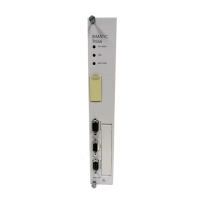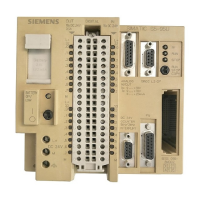156 •
••
• 9 - PID Loops Simatic 505 SoftShop
Freeze Bias
Select YES or NO in the Freeze Bias field.
Select No to have the bias adjusted when the output goes out of range.
Select Yes to have the bias frozen when the output goes out of range.
Derivative Gain Limiting
Select Yes or No in the Derivative Gain Limiting field to have derivative
gain limiting done. If you specify No, then derivative gain limiting is not
done, even if a value is entered in the Limiting Coefficient field.
Limiting Coefficient
Enter a value of the Derivative Gain Limiting Coefficient in this field.
Typically, Derivative Gain Limiting Coefficient should be in the range of
10 to 20.
In the standard PID algorithm, the algorithm responds excessively to the
process noise if the coefficient of the derivative term (rate time/sample
time) is significantly above the 10 to 20 range. This causes disturbances
that lead to erratic behavior of the process.
To solve this problem, the controller allows you the option of selecting a
derivative gain limiting coefficient. Using this coefficient enables the
process variable to be filtered with a time constant that is proportional to
the derivative time. The PID equations with the derivative gain limiting
coefficient follow.
Special Calculation On
Enter a PROCESS VARIABLE, SETPOINT, or OUTPUT in the
Special Calculation On field. Select NONE if no SF program is to be
called for execution.
Special Function
Enter a SF program number in the SF field. Select NONE if no SF
program is to be called for execution.
Lock Setpoint
Select YES or NO in this field to lock or not lock the SETPOINT.
Lock Auto/Manual
Select YES or NO in this field to lock or not lock the AUTO/MANUAL.
Lock Cascade
Select YES or NO in this field to lock or not lock the CASCADE.
Error Operation
Select SQUARED or DEADBAND in the Error Operation field. The
Error Squared and the Deadband options are mutually exclusive. Select
NONE if there is be no calculation on the error value.
In calculating the control equation, the controller uses an error value
equal to or less than 1.0 (% of PROCESS VARIABLE span over 100).
Therefore, selecting error squared gives a lower gain for a higher error.

